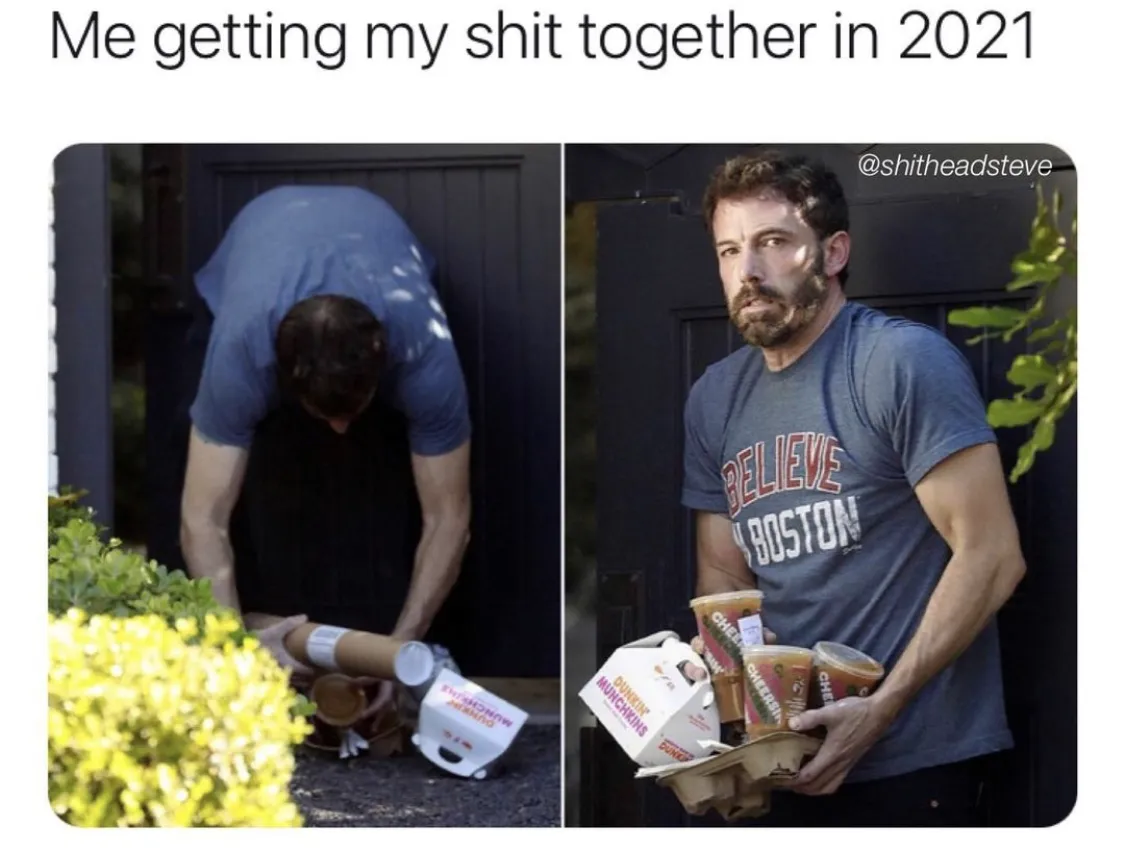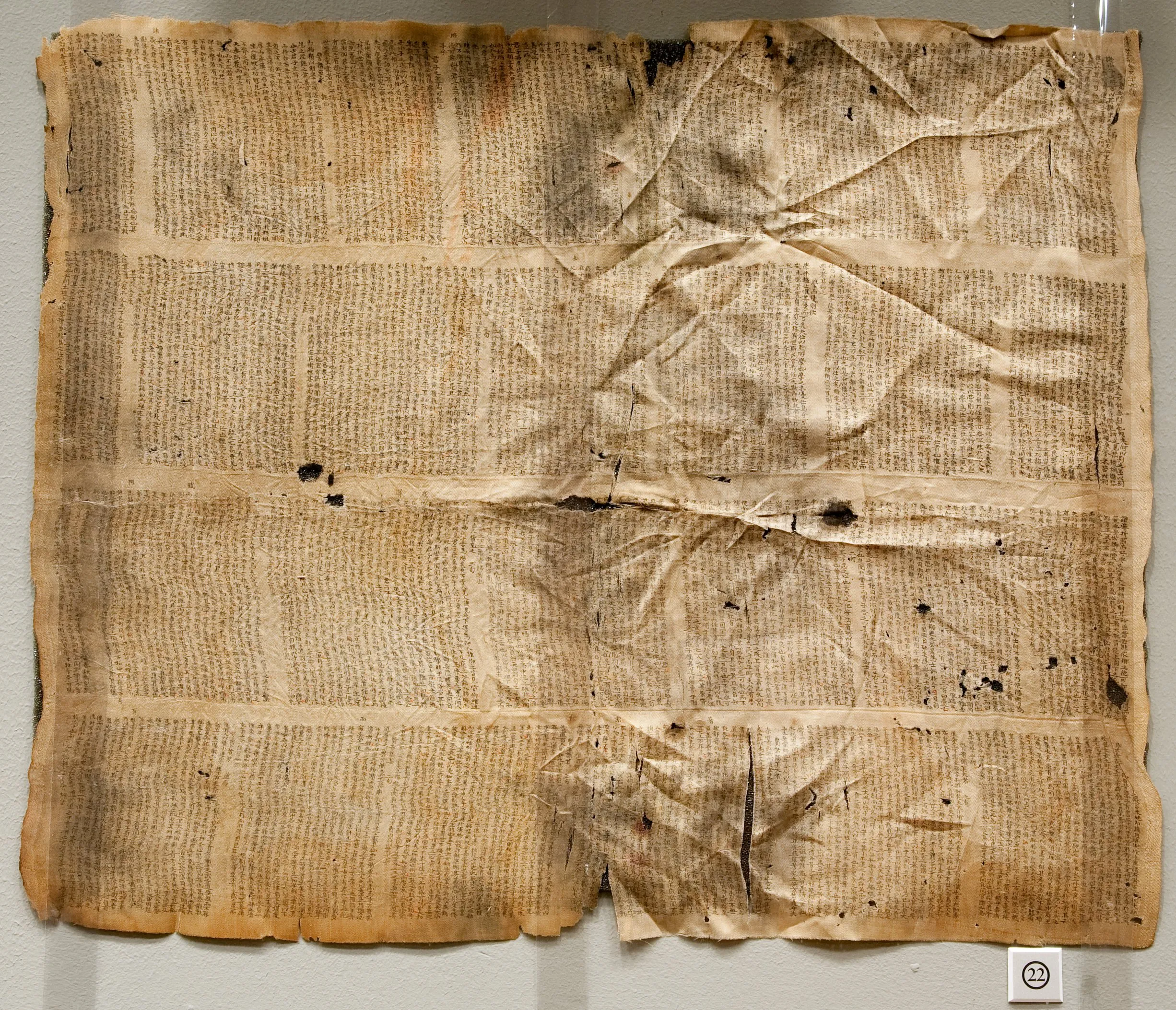I’ve gotten a lot of bad advice in my career and I see even more of it here on Twitter. Time for a stiff drink and some truth you probably dont want to hear. 👇👇
College isn’t worthless for everyone. All of the successful folks who tell you college is worthless went to college. What does that tell you? It’s not about the learning, though. It’s about growing and learning how to sell yourself and your ideas.
Miami isn’t the next tech hub. It’s surrounded by a swamp. Construction costs are insane because of hurricane codes. Vacant land doesn’t exist. Property insurance has risen on average 20% per year for 5 years. Plus it’s hot AF. Ever been there in July?
Starting a business isn’t right for everyone. 95% of folks are better off getting a job. It’s hard AF. Decisions are critical and plentiful. Risk is for real. Stress can be crippling. Delegation can be impossible for poor communicators. Most folks don’t have what it takes.
Technology isn’t as far along as the media makes you think it is. We’re 5+ years away from autonomous vehicles. Alexa still can’t play the song I want 25% of the time let alone make decisions and “learn”. Robots fall on their faces when they aren’t on perfectly flat ground.
Real estate isn’t a good place to start. It’s terrible at generating wealth compared to other forms of entrepreneurship. Rich parents or a bankroll of your own? Sure. Everyone else? Start a biz or make money some other way. The odds are much better.
More on RE because this is important. Early in your career you need to double and triple or create cash from nothing. That’s hard AF to do in real estate. It’s good at growing your wealth over a lot of TIME. Early on you don’t have time. Do something else.
Don’t “just buy that first property”. I hear this so much but it makes me angry. Assets are overpriced AF right now and yield is tight. Overlevering right now is very risky. Look for cashflow, not appreciation. Cashflow is TIGHT out there right now.
Chasing your passion is a bad idea. And it’s the best way to end in heartbreak IMO. If you’re passionate about it so are other people. It’ll be competitive AF. You’re more likely to make emotional (and bad) decisions. Chase opportunity now and your passion later.
Getting rich quick isn’t possible. The media tells you the stories of the overnight successes. But that’s all bullshit. It gets clicks but it doesn’t work that way for 99.99% of successful folks.
Giving up is often the best choice there is. Too many people drag along projects with poor odds of success for far too long.
Money isn’t your most valuable asset. Time is much more important and unlike money you can never get it back. Use it wisely and cut people out who waste it.
You don’t need a new idea to start a business. Do something a lot of folks are already doing and do it just a little bit better.
The “blue ocean” strategy is bullshit. Competition is good. It means there is money to be made. The market exists. You can study it and figure out a strategy that has been proven to work.
Choosing your competition is much more important than you think. Who would you rather compete with? The group of folks with VC money and Stanford degrees or the guy down the street who used a fax machine?
Working hard isn’t going to get you ahead. A lot of people work hard for 70 hours a week until they die. Why do we glorify that? Making good decisions and working SMART is much more likely to make you successful.
You can’t have it all right now. There is a difference between rich and wealthy. Rich people buy nice cars they bought with their first check. Wealthy people buy assets that send them money every month so they can work less.
When everyone wants to buy something it’s too late. When nobody wants to buy something is when the smart money enters the game. “Be greedy when others are fearful and fearful when others are greedy”
Building something that can add a little bit of value to millions of people isn’t the way to succeed. You’re way better off building something that can add a lot more value to a very small subset of the population. Riches are in the niches.
Changing the world without any money is a fools errand. You know who really influences the world we live in? The folks with money. Make money first, change the world later.
The real opportunities aren’t online. Being a digital nomad severely limits you from taking advantage of the largest barrier to entry that exists: GEOGRAPHY Real estate, service businesses, etc. Wrap in technology sure, but compete locally.
The biographies of tech unicorn founders won’t help you. Survivorship bias is terrible. For every one that succeeded thousands more failed. What are the odds again?
Software engineers aren’t going to be the leaders of the future. Folks who can look someone in the eye and build rapport and sell themselves and their ideas will. Learn to communicate if you want to set yourself apart. The next generation is severely lacking in this area.
There isn’t one way to win. What Elon Musk did to win won’t work for you. What I am saying here isn’t true for everyone. Get advice from a lot of people, apply what makes sense to you, learn, adjust, and do the best you can.
The key to success isn’t intelligence. It’s sales. If you can get uncomfortable and put yourself out there you’re half way there. If you can be compelling and attract others to your way of thinking you’ll win. LIFE is all about sales.
Going big is a terrible way to start. You’ll end up likely failing and going to get a job. Start small. Low risk. Learn and take opportunities as they come. Batting average > slugging percentage.
Business isn’t about who you know. It’s about momentum. Impress someone in a small way and you’ll get a bigger opportunity later. What you’re doing right now will look nothing like what you’re doing 10 years from now if you’re doing it right.
If it’s easy it isn’t worth doing. Life begins at the end of your comfort zone. You show me a successful person and I’ll show you someone who embraces uncertainty and pushed back that self doubt to take a chance.
Books are overrated. Conversations are underrated. Experience is how you learn but it’s not necessarily how you get better.
Too much weight is put on the tail events when you make decisions. Often times one or two main levers determine 90% of your likelihood of success. Focus on those. The rest is noise.
A tailwind is way more important than your competence. Alpha is overrated. Get in on the right trend and everyone wins. Rising tides rise all ships.
You do well by being a jack of all trades. You do VERY WELL by getting really good at one thing and outsourcing everything else. Focus is critical and diversification is overrated.
Your emotions are messing up your decision making. Manage your ego and your self-doubt. It clouds your judgement.
Nobody knows what the hell they’re doing and if they are a self proclaimed genius they are lying. Every successful person is just figuring it out as they go along.
Open-mindedness is the key to success. The people who truly want to get better surround themselves with folks who challenge them. NOT the folks who only agree with them.
80% of folks have a negative attitude. Avoid them at all costs. Gossip destroys your mind and your productivity.
We don’t live in a world of scarcity. Everyone can win. Joe making money doesn’t mean John lost money. An abundance mindset will not only make you happier but also more productive.
It’s really easy to be a bear and act like the sky is about to fall. But 99% of folks who got wealthy did it by betting ON something, not against something. Bears get clicks. The media spreads fear. Positivity wins.
Understanding what you can control and what you can’t is underrated. Far too many people spend far too much energy thinking about and worrying about things they have absolutely no control over.
Changing your mind doesn’t make you look weak. It makes you BETTER.
Making a big decision while emotional is a recipe for disaster. Being able to avoid emotions and make decisions with logic is a superpower.
Nobody cares about you but a handful of people. Caring less about what people on the internet or even those you interact with daily think about you will serve you well.
Listening is great. But if you haven’t made it yet SPEAK UP. Status is a game. You have to play it. Opportunities don’t just fall on your lap. You have to carve out something.
Once you’ve made it, talk less. It’s easy to use past success to talk you into future success. Keep an eye out for blind spots.
People do business with people they like. Be likeable. Ask questions about them. Find out what they are into. Ask good questions.
Buying and selling isn’t logical. It’s emotional. The sooner you understand that the sooner you can use it to your advantage.
A supportive spouse will 10x your success. The opposite will 1/10 your success.
90% of folks in this world either aren’t competent or are emotionally unstable. Surrounding yourself (and filling your conpany) with the other 10% is the ultimate key to success.
Most thought leaders and influencers spend 99% of their time trying to sound smart. They purposely make things too complicated. You’re often better off getting advice from your grandfather.
Doing what you want to do when you want to do it is success. Time is wealth. Our leaders glorifying trading your 20s and 30s for earning and money isn’t in your best interest. It’s in theirs.
A LOT of the advice you get in this world isn’t in your best interest. It’s in the best interest of the person giving you the advice. Therefore you must always know the interests of the person you go to for advice.
There is no better way to live a fulfilling life AND make a lot of money than serving other people. Add as much value as you can to other people and you’ll be wealthy and happy.
Value and money aren’t always equal. Entrepreneurs are tasked with trading value for money.
Speculators make money by guessing properly and to make that money someone else does indeed have to lose it. Entrepreneurs get wealthy by adding value. The second is more rewarding, less risky AND more profitable.
You get ahead early in your career by saying yes to opportunities. Your life gets better when you get to start saying NO.
Insecurity plagues even the strongest among us. I’m insecure as hell in a lot of areas of life. Pushing through is where I get better and I encourage you to do the same.
Bad mentors tell you what to do. Good mentors ask the right questions so you can learn how to think for yourself.
Life is hard. For everyone. Social media makes you think everyone has it made. It’s a struggle no matter how much you have or how successful you are. Embrace the challenge and do what we all do: Try to live so that our kids can have a better life than we have.
Having kids is underrated. Every 60 year old I know cares about one thing and one thing only: Their kids and grandkids. Make the sacrifice now to reap the rewards later.
You can move to any city in the country and you’ll be miserable if you don’t accept one truth: The tribe makes the place. If you have good people around you you’ll be happy anywhere.
Most of our friends are our friends because of proximity. If you can make friends based on interests and find folks who want to get better and make you better you will be truly happy.
75% of folks don’t truly, deeply know anyone and nobody knows them. Get vulnerable and really get to know someone. What scares them. What they deeply desire. What makes them tick. And find folks who want to know you in that way and let them in.
Providing for your family goes way beyond money. Love and attention are often more strongly desired than food and water. Be present and explore, play and get to know your family on a deep level. Create a bond. And reap the rewards forever.
Goal setting is over-rated. It’s easy to write a list of things on a paper. Doing the work is what sucks and is hard and takes forever. And doing the work is the only thing that matters.
A positive attitude and a smile is a choice. And it will rub off and open doors and lead to a better life. Make the choice every day.
75% of people are filled with jealousy and hate. They are insecure. Smile at them and show compassion. And most importantly DONT TAKE WHAT THEY SAY AS FACT.
The folks who confirm your beliefs should be considered. But the folks who disagree and engage you should be treasured.
I wonder how many tweets I can add to this thread before I hit the limit? I’ll use this as a chance to say something important: I’m just a guy who thinks deeply about things and has experienced some success. Nothing I say should be blindly followed or taken as fact.
I’ve had success not because im special but because I’ve followed the path of least resistance. I was bullied heavily in elementary school. Athletically gifted (for a white guy) but wasn’t foolish enough to think basketball could get me a scholarship.
So I ran track and did several events. Nobody bothered me and I just did my thing. Got accepted to the Ivy League and was lucky enough to win an Ivy title in the hurdles as a freshman.
But I knew I could never be world class in that event. So I took up the decathlon. An event you haven’t heard of and less than 1,000 folks on the USA complete in a given year.
The best athletes were sprinting and jumping or playing football. So I, as a mediocre athlete, set records and was an all-american. USA championship qualifier, missed the Olympic trials by one spot.
All my smart friends at cornell were chasing tech startups. So I started a little service business called Storage Squad with a friend. Once again the competition was terrible and it was low hanging fruit.
10 years later and a 7 figure exit and we’re buying little mom and pop storage facilities in small towns that nobody wants. We do a few things different (mainly with technology) and we have a huge competitive advantage.
It’s easy and tempting for me to claim that I’m self made. But I’m not. And anybody who tells you they are is a liar. I had 10+ folks influence my life in those critical early years and make me a better man.
Managing expectations is the key to a happy (and stress) free life. Over-promising and under-delivering is a recipe for disaster. Sell in a different way. Make your value add clear and let the other party sell themselves.
Everything in life is a negotiation. If you can understand all negotiations are also emotional you’ll get a lot further. Figure out what it is the other person deeply wants. Hint: they often won’t tell you or even know how to verbalize it themselves.
It’s really easy after you’ve had some success to preach the extreme ownership and “anybody can win” mentality. This is bullshit. Most people can’t reach the bottom rung of the latter let alone climb it.
Spend a good portion of your time giving folks the initial boost they need to start climbing the ladder towards a better life. It’ll pay for itself 10x over in joy and relationships created.
Almost everything you regret in life will be the result of a decision you made while emotional. See a trend regarding emotions yet?
Greed is an emotion. And it’s the most dangerous of them all.
Enter every interaction with the goal to add as much value as you can and your world will open up. Enter every interaction with the goal to maximize money or anything else for yourself and watch yourself struggle to find wealth or happiness.
Curiosity is a bigger factor of success than intelligence. The folks who get excited to explore and learn and take steps forward into uncertainty win.
There are two ways to sell: 1. Overcome objections, figure out what’s holding folks back, talk about the positives 2. Find people who need what you’re selling more than you need their money, talk about the negatives, and let them sell themselves. #2 is best.
As a company you have three areas where you can compete: 1. Price. Undercut overtone. 2. Speed. Deliver quickly. 3. Quality. Be the best.
If you compete on price you will not be successful. You’ll create a stressful job for yourself. Never able to afford good help. Always putting out fires. Compete on speed and quality and charge a higher price.
That way you can delegate and build a healthy company. You can pay good help. You can afford proper equipment and resources. And you can scale.
Average folks spend their time putting out fires. Employee comes to them with a problem. And it’s get out of my way so I can fix this problem.
Successful business owners build systems to prevent the fires. Oh you have a problem? How would you fix it? How can we prevent it from happening again?
90% of folks in life play defense. Other people make decisions and they react. They are totally out of control. They complain, blame others and continue to react to their surroundings.
10% play offense. They make decisions that control their earnings, where they live, who they spend time with. They are in control. They don’t complain and they own up to their situation.
It takes time to move from playing defense to playing offense. One decision at a time for a long time. But it’s worth it.
Words of affirmation are stronger motivators for a large portion of the population than money. Praise loudly, often, and in public.
The market doesn’t care what you want or what you think will happen. It’s ruthless and it’s true. And it doesn’t give a shit about you or your ideas. To succeed in the market you must be selfless and search truth over being “right” in someone’s eyes. The ego is the enemy.
99% of people network all wrong. With their hand out. Help me. Do this for me. Introduce me. Me me me me! It’s not about you!
The way to win: Become a master at something and begin to help other people. Put in the work. Have a unique skill set. Then add value everywhere you go. Then watch your network explode. This is tough to hear right? Work first network later? Bummer I know.
Simple almost always wins. Simple businesses. Simple jobs for your employees. Simple structures. Keep it simple!
And another hard truth - Most employees WANT structure. They want guidance. They want you to set them up for success. Autonomy is great but business owners miss the make here and end up throwing employees to the dogs and setting them up for failure. Simplify the job.
If folks wanted autonomy and to make decisions all day they’d start their own businesses. And this leads to another point. Very few people think like you do. But you project your needs and desires in others. Stop doing that.
Your employee doesn’t want profit sharing and upside. He wants a paycheck he can count on and for you to tell him he’s doing a good job.
Status and respect is desired much more than money by most people. And it’s free for you to give. So give it lavishly!
More folks should start businesses like poker players play hands. What do I need to invest, what is the likelihood of success, and how much would I win?
They’d figure out picking the low hanging fruit and going after that first passive $100k a year is a lot more likely in sweaty industries without much curb appeal.
And folks should also re-calibrate how they think about earnings and success. How much money do you really need? I’ll tell you there are only three levels of wealth…
#1 - you can successfully feed your family and you aren’t worried about making rent, delivering the essentials to live.
#2 - you can go in a restaurant and order whatever you want without looking at the price.
#3 - you can travel and buy flights without worrying about the cost.
Beyond that more money doesn’t matter. So why do we chase millions or billions? Ego and status. Recognize it’s a fools errand and forget about the games around these two things. Because you can’t win.
You’ll end up buying things you can’t afford to impress people you don’t like. It’s real. Focus instead on making enough to do what you want to do and TAKING BACK YOUR TIME so you can spend it building memories with people who do know you and do care about you.
Trust is a funny thing. It takes years to build but seconds to throw away.
If your goal is to make someone else better amazing things happen. They reciprocate and a unique synergy happens. Those are the best relationships. Build them and charish them.
I went to the mountains yesterday and did some reflecting. I suggest every so often you turn off the input and sit alone with your thoughts. Clarity isn’t something that comes easily in a world of constant distractions. Do it. It’s worth it. https://t.co/mKKHaZiE6o
Everything in life is an opportunity. You get out what you put in. You can let it slip through your fingers. Or you can grab hold and ride it to the next level. When things change massive opportunity is created.
There has never been a time of more rapid change for so many people. As an opportunist you have a choice. Are you going to capitalize, add value and make a name for yourself? Are you going to start taking steps to lead to a better life? Or are you going to sit back and watch?
What is the meaning of life? I think it’s different for everybody and lucky for us we get to chose what really drives us. To some it’s seeing who can die with the most money and they don’t care if there is a wake of distraction left behind.
For me it’s seeing how many lives I can positively influence. And building unique, deep and meaningful relationships with a handful of individuals. I’m thankful this platform gets me closer to my goal. And thank you for following along and for making me a better person.
If you enjoy this kind of thing I suggest following a few others who think a lot differently. @baldridgecpa @fortworthchris @moseskagan @SullyBusiness @amandaorson @Keith_Wasserman @BrianColunio @scottyo21 @MattLasky @tsludwig @awilkinson @ShaanVP














